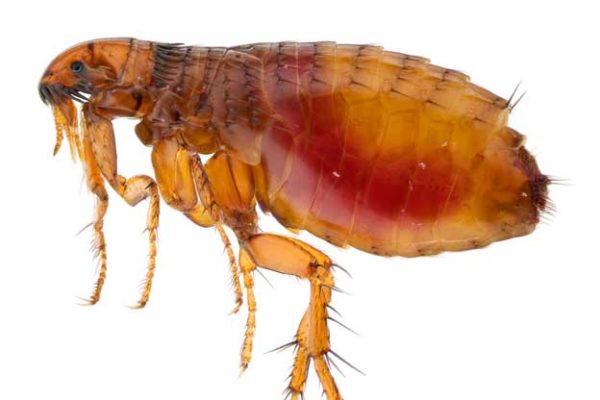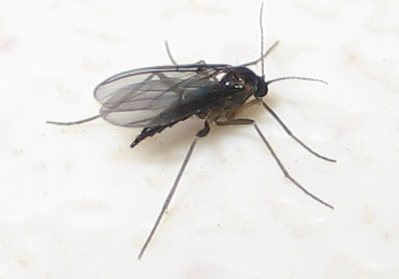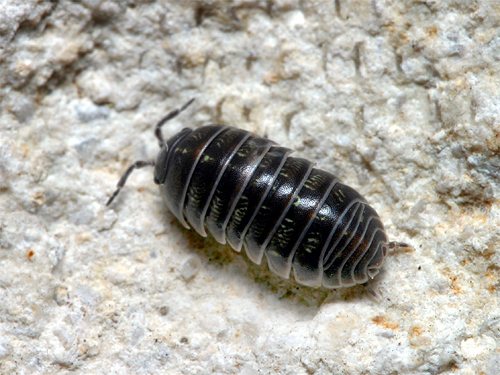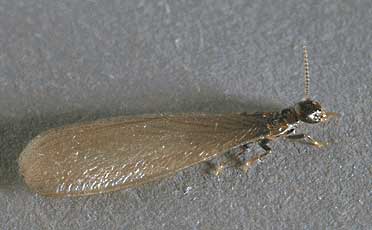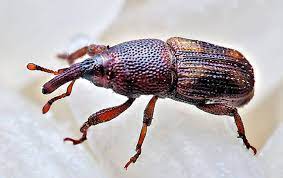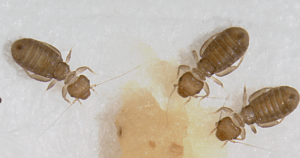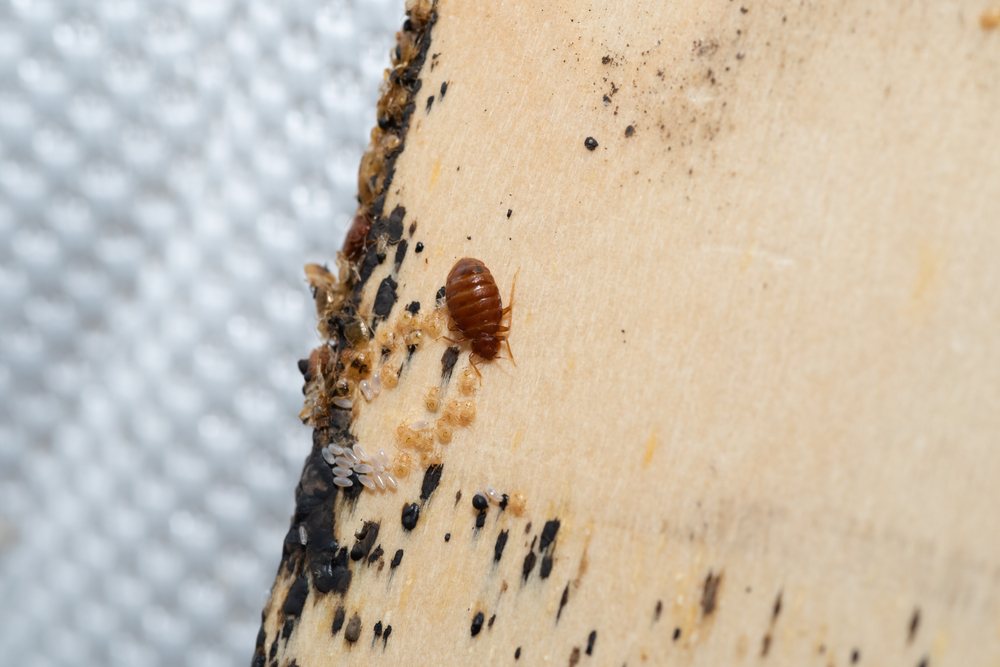Dealing with an insect infestation is bad enough on its own.
Though it’s made even worse when you don’t know the kind of insects you’re dealing with.
If you spot “small, black bugs” around your house…
It could be one of many different species of black insects…
Some options include fleas, ticks, beetles, or even bed bugs.
In a 2018 survey from Pest Control Technology:
84% of bed bug experts were initially called to treat pests that were different from what they actually found upon entering the home.
Is this a problem?
Yes, because each species of insect might require a very specific kind of treatment.
Pest control treatments that work on bed bugs, for example, might not be as successful on a different (but similar-looking) insect like fleas or lice.
So, how do you properly identify the “small black bugs” in your home, anyway?
This comes down to 2 factors of insect detection.
- Identifying core physical characteristics.
- Detecting signs of an insect’s presence.
Once you educate yourself on these 2 factors, identifying the type of infestation you’re experiencing becomes less of a challenge.
Page Contents:
What Are These Little Black Bugs?
The short description “little black bugs” can apply to a lot of insects.
Some can be easily identifiable, like ants or flies. Others may be more difficult to identify at first glance.
Here are examples of 10 insects can be described as “little black bugs:”
- Ants: One of the most common household pests, ants typically build their colonies underground. They may wander inside looking for food, which they bring back to the nest in order to feed their queen.
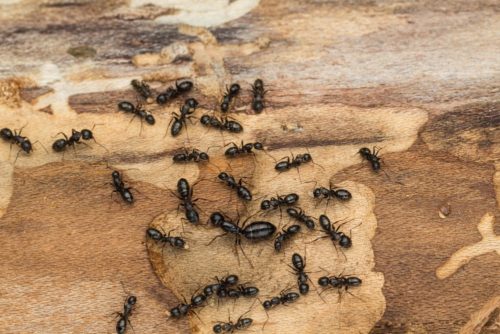
- Fleas: Often living off of animals, fleas may jump to a human host if given the chance. They will target the lower extremities, such as the legs, ankles, or feet. Flea bites look like red-colored dots, and typically appear in clusters.

- Gnats: Gnats are much more often seen in the early morning and evenings. They can number in the thousands in any given colony (large swarms are known as “clouds”). Fortunately, gnats don’t live very long and they’re only common in the late spring or early summer.

- Pill Bugs: If you live somewhere with a lot of dead wood or leaves, then you might encounter pill bugs at some point. They eat decomposed plant matter, but in agricultural areas, pill bugs can target crops.

- Reproducer Termites: These unique termites can be found searching for 2 things. Either a mate or a location to establish a new colony. Reproducers also have wings, which leads some people to mistake them for flying ants or other winged insects.

- Ticks: Ticks are commonly encountered in woodlands or grassy areas. Once they find a host, they use their beak-like mouth to burrow into the skin and begin feeding.
If left alone, a tick will eventually fall off your skin on its own, but allowing ticks to stay attached can lead to dangerous disorders such as Lyme disease.
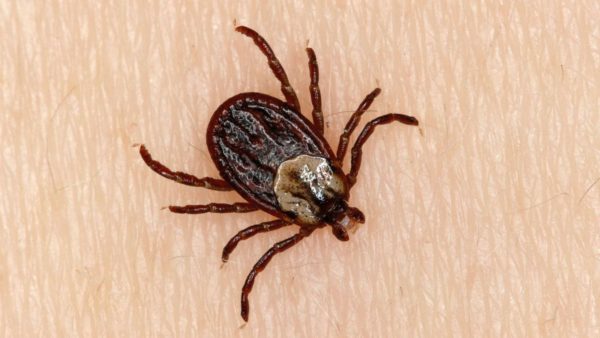
- Weevils: Weevils are a pantry pest, meaning that they prefer to hide in places where food is stored. You can identify a weevil by its shiny exoskeleton and long, thin snout.

- Bat Bugs – These are blood-sucking insects closely related to bed bugs, primarily infesting bats but capable of biting humans when their bat hosts are absent. They resemble bed bugs in appearance and behavior, often found in areas previously inhabited by bats or in structures adjacent to bat roosts.
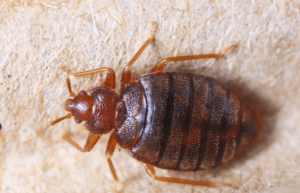
- Booklice – These bugs are tiny insects that feed on microscopic mold and fungi found in damp or humid environments such as books, paper, and stored food products. Despite their name, they are not lice and do not bite humans, but their presence indicates high moisture levels and potential damage to infested items.

- Carpet Beetles – Carpet beetles are small, oval-shaped insects known for feeding on natural fibers like wool, fur, feathers, and even stored food products. They can cause damage to carpets, clothing, upholstery, and other household items if left unchecked during their larval stage, which is when they actively feed and cause the most harm.
What Other Insects are Small and Black?
Many other species of bugs are black.
These include the following:
- Cockroaches
- Flies
- Grain insects
- Larder beetles
- Mosquitoes
- Pirate bugs
- Scabies mites
- Spiders
- Swallow bugs
Can Bed Bugs Be Black?
No, bed bugs never appear black at any point in their life cycle. While their skin does turn darker as they mature, the darkest they get is a reddish-brown color.
When bed bugs hatch from their eggs, they appear almost translucent. As they grow into nymphs, their skin begins to turn off-white or yellow in color.

Once a bed bug reaches adulthood, its skin takes on a rust-colored appearance.
The confusion may stem from people confusing certain species of Carpet Beetles for bed bugs.
(Due to their similarities in body structure).
How Do You Tell if a Bug is a Bed Bug?
At first glance, telling a bed bug apart from other insects may be difficult. Be sure to look out for the following physical characteristics:
- Flat, oval-shaped body
- Reddish-brown color
- Small size (bed bugs are only ¼ inch in length)
- Thin antennae
Bed bugs also leave behind other signs that inform you of their presence…
Bite marks are one of the most common signs of a bed bug infestation. They are commonly found on the upper torso and look like red-colored welts.
Bed bug bites are itchy, but it’s best to try and leave them alone. With proper treatment, they will go away within 1 to 2 weeks.
Another common sign of bed bugs is blood stains on your bedding.
Blood stains can appear on your sheets in certain areas where bed bugs are feeding.
Bed bugs may also leave fecal stains. These stains look like black dots on your furniture or bedding and can be removed with proper cleaning.
What Are The Tiny Black Bugs in My Bed?
If you observe little black bugs in your bed, it’s unlikely that they are bed bugs. Many types of insects will hide in bedding if it means access to an easy meal.
Bat bugs, for example, are close relatives of bed bugs and share major physical traits.
However, it’s rare for bat bugs to nest inside furniture…
As they prefer living in attics and chimneys.
Bat bugs will only feed on humans if there is no other source of food available.
Fleas can infest your bed if you let your pets sleep with you. While fleas usually survive on animal blood, they can feed on humans if given the opportunity.
Is Bed Bug Blood Black?
Bed bug blood is not black.
In fact, if you squash a bed bug…
You might not even see its original blood.
Bed bugs feed on human blood. As they ingest more blood, their bodies start to elongate and turn dark red.
If a bed bug is crushed before it can digest the blood, there will be a rust-colored bloodstain left behind.
Though if the blood is bright red…
What you’re seeing is human blood, not bed bug blood.
What to Do if You Find Bed Bugs in Your Home?
If you find bed bugs in your home, it’s essential to take immediate action to control the infestation:
To do so you can follow these steps:
1. Inspect and Confirm: Conduct a thorough inspection to confirm the presence of bed bugs. Check mattresses, furniture, cracks, and crevices near sleeping areas. Look for live bugs, shed skins, or bloodstains on bedding.
2. Containment: Limit the spread of bed bugs by isolating infested items. Use sealed plastic bags to contain bedding, clothing, and other belongings. Reduce clutter and vacuum thoroughly, disposing of the vacuum bag immediately afterward.
3. Get Professional Help: Consider contacting a licensed pest control professional experienced in dealing with bed bugs. They can assess the extent of the infestation and recommend appropriate treatment.
4. Follow Treatment Protocols: If using DIY methods or under professional guidance, follow the treatment protocols diligently. Repeat treatments as necessary and be patient as eliminating bed bugs may take multiple attempts.
5. Prevent Reinfestation: After treatment, take preventive measures to avoid a recurrence. This includes regularly inspecting and cleaning your home, sealing cracks and crevices, using mattress encasements, and being cautious about second-hand furniture or items that could harbor bed bugs.
6. Monitor and Follow-Up: Keep monitoring your home for any signs of bed bugs even after treatment. Promptly address any resurgence to prevent a full-blown infestation.
Remember, dealing with bed bugs can be challenging, and seeking professional assistance is often the most effective way to ensure thorough eradication and prevent their return.

